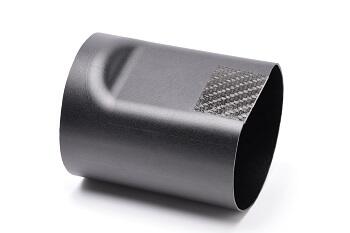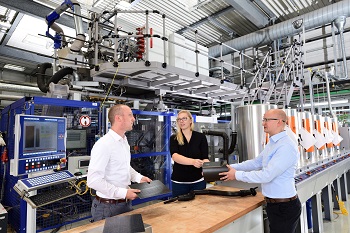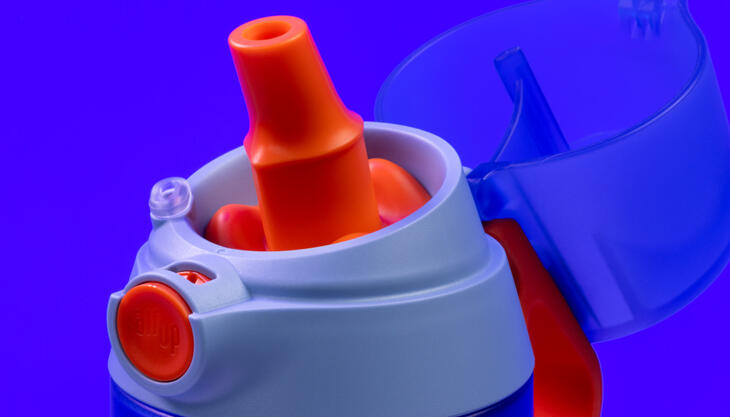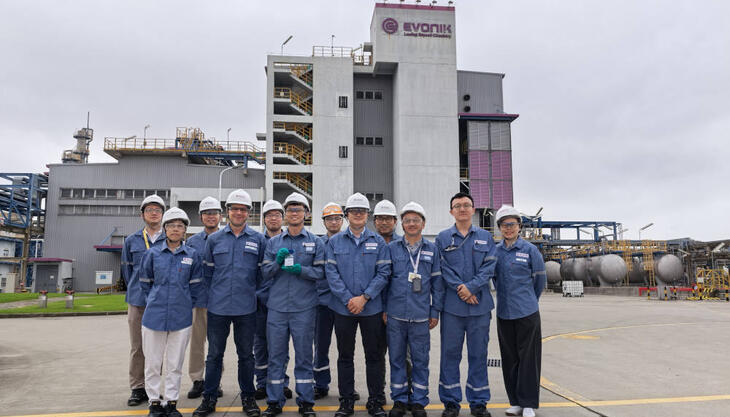Lanxess extends use of composite material to extrusion blow molding

In a feasibility study, experts at Lanxess demonstrated that components made of polyamide 6 can be manufactured with blow molding technology while receiving local reinforcement with Tepex at points subject to heavy loads. The investigations were performed on a state-of-the-art and close-to-production blow molding machine at the technical center of the High Performance Materials business unit (HPM) in Dormagen. “The components show an outstanding adhesion, which allows utilization of Tepex’s tremendous strength and rigidity,” explains Arthur Rieb, blow molding specialist at HPM.
The process can be used to locally boost the mechanical performance of blow-molded components, for instance in areas that are subject to high mechanical stress due to impact loads or high pressure. “In addition, it is suitable for the manufacture of blow-molded structural components, for example hollow sections for car body reinforcement. Extensive use of Tepex can be a key factor in reducing weight and material use because the basic wall thickness of the component can be decreased,” Rieb explained. Based purely on thermoplastic systems, the hollow parts are easy to recycle, thus making it easier to establish closed-loop material cycles.
Blow molding step determines cycle time
When manufacturing such hollow parts, a tubular parison is extruded first of all. At the same time, a heated and plasticized Tepex insert is placed in the blow molding tool. The parison is then inflated in the tool, thus also forming the Tepex section. This results in a component with a defined shape and local Tepex reinforcement. “The forming of Tepex is integrated in the blow molding process. Therefore, the result is a one-step overall process with short, economically efficient cycle times that are typical of blow molding,” added Rieb.
 Simplified process
Simplified process
Previously, manufacturing components of this kind involved the subsequent welding of a two- or three-dimensional Tepex insert onto the blow-molded hollow part. The overall process in the first case has two stages, while that in the second case has three due to the preceding Tepex forming. “Therefore, our process makes things much simpler,” said Tilmann Sontag, expert in lightweight design at HPM’s Tepex Automotive Group. “In addition, the fabric reinforcement makes the plasticized Tepex material much easier to handle than tapes that are unidirectionally reinforced with continuous fibers. This enables a stable and safe production process.”
Fully consolidated material bond
The continuous fibers in Tepex are fully pre-impregnated with plastic. Consequently, the pressure during blow molding is sufficient to consolidate the material so that no air pockets are formed. “The result is a material bond with excellent adhesion between the blow molding material and Tepex. Even low blow molding pressures are enough to form Tepex into critical 3D geometries such as hemispheres with tight radii,” said Sontag.
Wide range of blow moldable polyamides
HPM has developed a wide product range of high-viscosity compounds based on polyamide 6 and 66 with and without glass-fiber reinforcement. These materials can also be used for the new process/material combination. For instance, the range includes very soft, impact-resistant product variants such as the unreinforced polyamide 6 compounds Durethan BC700HTS DUSXBL and Durethan BC550Z DUSXBL. Materials of this kind are extremely suitable for Tepex-reinforced tanks or other hollow parts where the application also requires high impact resistance and flexibility, for example. By contrast, the glass fiber-reinforced product types tend to be the material of choice for lightweight structural components.
With Tepex, too, a wide range of product types are available for the process – for instance material variants that are reinforced with continuous-fiber fabrics or laminates made of glass, aramid, or carbon fibers. The matrix of composites is also capable of variation. In addition to polyamide 6 or 66, for instance, it can also consist of polyolefins such as polypropylene or polyethylene.



















